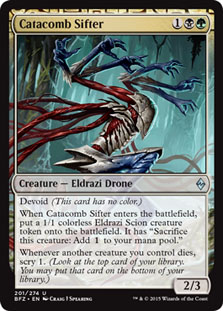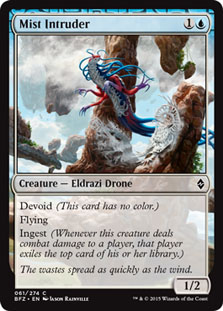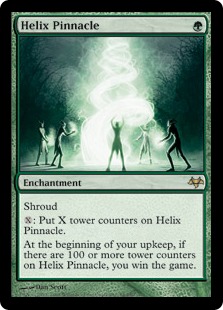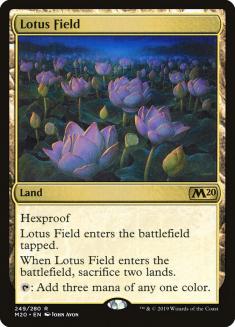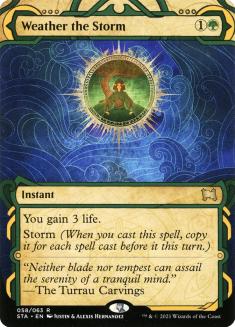Hello, and welcome to this edition of Sullivan’s Satchel. We’ve got a new, fresh Standard format on our hands, which can only mean one thing: a furious request for bans. I’m not really in a place to speak to what action I think is appropriate, if any — I haven’t played the format, and none of the controversial cards have such intrinsic play pattern issues that I hate them on First Principles. In broad defense of that sentiment, however, I’d like to offer up two thoughts.
- The game is supposed to be fun. If you aren’t having fun, it isn’t unreasonable to ask for things to be different. That doesn’t mean the feedback is actionable, but you should give it if that’s where you’re at.
- It is common among players of my “vintage” to say something like “players nowadays just ask for bans all the time.” Though it is true that the community calls for action more frequently than they did twenty years ago, I believe that has more to do with WotC shifting the Overton Window on what warrants a ban rather than some perceived softness of the younger crowd. When I was playing, the notion of banning Goblin Lackey and Disciple of the Vault was absurd; they were just creatures, after all (set aside that Disciple is barely a creature at all for this purpose.) So what? Who said creatures were off limits? Well, WotC did, sort of implicitly, by never banning them, and that informed my opinion of what the possibility space was. You can just update that, and then other people’s perspective will change.
With that, the questions. As always, you can send yours to mailbag@starcitygames.com or DM me on Twitter @BasicMountain. I answer a few of them each week, and one question gets selected as Question of the Week™, with its author winning $25 in SCG credit, enough to buy several copies of a card likely to be banned within the coming months.
From Friend of the Satchel™ Ben Seitzman:
“No”, to both, but for very different reasons.
I don’t consider devoid to be a mechanic at all. Calling an object something it isn’t by fiat and then leaning into the fact that you’re calling an object something it isn’t does not qualify as a “mechanic.” It’s just a lie. If you made a set where all the creatures said “this isn’t a creature” and then made a bunch of Doom Blades and then the “cool” thing was you couldn’t Doom Blade them even if they were white, that isn’t a mechanic.
Ingest is kind of sweet, I think. Milling is fun and the tone is great for Eldrazi. I dislike “exile zone as second graveyard” and so I don’t like the Processor and related space, but some version of Ingest where you and/or the creature got some bonus depending on the card type of the thing you exiled? That sounds cool.
From Carl:
For me, a lot of it has to do with what the thing is doing, and how likely you are to be able to interact with the aftermath. Counterplay is great, but it doesn’t have to mean “can you blow the thing up or not?” Cutting in the other direction, that’s the problem with card drawing being too pushed — maybe you can interact with each additional game piece, but probably not forever, and so you can lose even if you’re well-equipped to handle whatever the other player’s ostensible strategy is.
Helix Pinnacle is about the worst example of this. It literally says “you win the game”, so you can’t interact with the aftermath at all. And the input is just dumping mana into it, which doesn’t imply a particularly interactive game in front of it. The saving grace here is that the card isn’t strong for competitive play, but this might be my least-favorite execution of shroud in the game. There’s no particular reason that you’d start from wanting to protect the experience of the “do nothing but spend mana” player, in my opinion.
Lotus Field is pretty close. It’s neutral in theory but not in practice, and it enables kills the turn it gets played some amount of the time, so it isn’t like making it targetable would invalidate the card as a competitive option or anything. Also, unlike Helix Pinnacle, its quite strong.
If you’re really committed to shroud or some variation for some reason, the solve is to make the thing more interactive either coming in or going out. A Helix Pinnacle that triggered off of creatures attacking/hitting? Slap shroud on that thing. A Lotus Field that can only cast creatures or planeswalkers? Sure, sounds great. But both cards lack that sort of safety valve, and so I’d be happier with both of them being targetable through conventional means.
From Liam:
For the reasons you mentioned, I abstractly like them being strong. I believe their heart is in the right place, and even though they were strong in testing I didn’t advocate for removing rate from them back when I was working on Magic, even though I thought both (and Chariot in particular) were approaching the upper bounds of what is appropriate on raw rate. And the rate matters, too. Even things that “play well” get played out, and so its important to keep your eyes on balance even if the best cards check a lot of the positive boxes. I don’t know either way if they’re sustainable over the course of Standard’s arc, but they aren’t the worst bets, as far as these things go.
To the extent I don’t like them, it involves a different semi-systemic issue I have with how Standard is balanced — the amount of rate in repeating, snowballing advantages, stuff with a high floor that’s also extremely good when you’re running downhill. I wish more of the best cards just did something, and then both players moved on with their lives, and the best cards were stronger (not all the time, not on a linear scale necessarily, etc.) with the extent to which the caster was losing the game. Neither of those cards is like that, and so they indulge some elements that I think are overrepresented in the competitive ecosystem. Again, they aren’t the worst bets, they’re probably better than the average bets, but they aren’t without their own issues.
Lastly, the Question of the Week™, and winner of $25 in SCG credit, from J White:
This is a very tricky needle to thread. You can’t assume each player has the same experience as you (in both directions, some will have more, some will have less) and the goal isn’t to make me look good or smart, it’s to make the players look that way.
I think its important to present things in terms of what you’re thinking about, versus what the other player is thinking about. That evades questions of “who is right?”, and focuses on the more material matter — that Magic is extremely complicated, and that two skilled players can arrive at different conclusions based on the things they’ve seen, experienced, anticipate in the current moment, etc.
Maybe I think a player isn’t giving enough respect to playing around Weather the Storm, for example. Maybe if the rolls were reversed, that player would say that I’m giving it too much respect, or that the card has declined in popularity on MTGO in recent weeks, and that they felt their best play was to ignore the possibility that their opponent has a copy in their hand and optimize for playing around everything else.
So if you can imagine that perspective, you can just talk about both at the same time, without an implication of who is “right” or “wrong”. I think that’s more stimulating or fun for the audience as well. I don’t think it’s very fun to hear a pro player give out grades for someone’s play, but to put themselves in the player’s seat, make a best guess as to their thought process, contrast it with your own without necessarily implying judgement, I think that stuff highlights the depth of the game in a way that’s engaging even for less skilled or experienced audience members, with the added benefit of not denigrating the play of the person you’re watching, or by making yourself look like a fool when the player turns out to be correct, which will happen some amount of the time.


